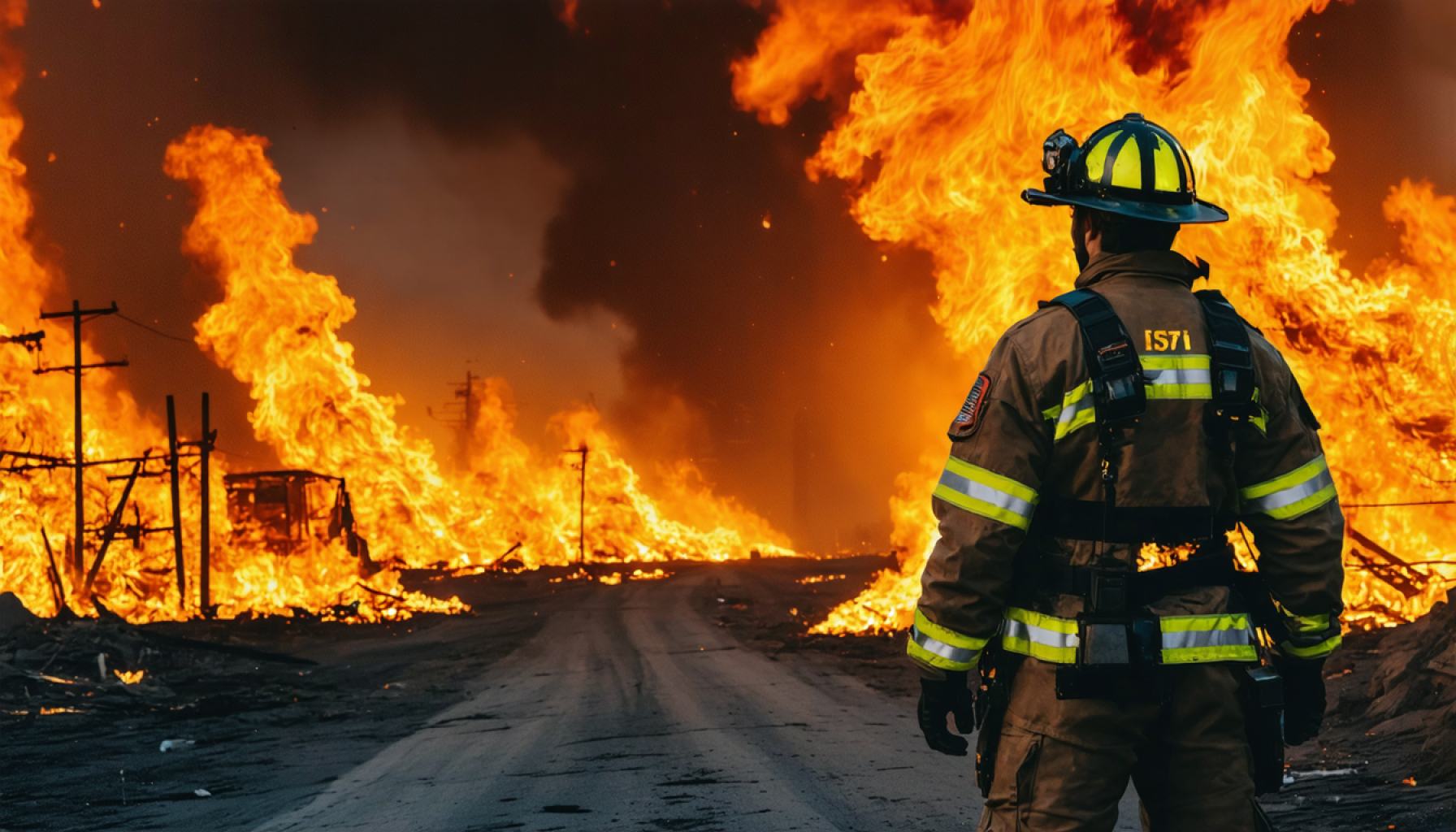- The Palisades and Eaton fires in Southern California have caused significant destruction, claiming lives and homes.
- Fire Chief Kristin Crowley was removed by Mayor Karen Bass due to alleged operational failures during the fires.
- Controversy arose from Crowley’s refusal to conduct an after-action report for the fire commission.
- Ronnie Villanueva, a retired veteran, has been appointed as interim fire chief.
- Mayor Karen Bass is under scrutiny for being absent during the crisis, attending an event in Ghana.
- The situation highlights the importance of decisive action, transparency, and preparedness in disaster management.
- Moving forward, Los Angeles must focus on rebuilding trust and ensuring effective crisis response.
Southern California’s skyline, often blushing with the remnants of sunset, was recently marred by a catastrophic blaze, leaving the city of Los Angeles reeling. The devastating Palisades and Eaton fires not only claimed dozens of lives and reduced homes to ashes but have also ignited a fierce political dispute. At the heart of this turmoil, Los Angeles Fire Chief Kristin Crowley has been abruptly removed from her position by Mayor Karen Bass.
Blame crackles through the city like a rekindled ember. One thousand firefighters—capable hands meant to battle the inferno—were reportedly sent home as the flames leapt uncontained. Mayor Bass, resolute in her decision, attributes this operational oversight to Crowley’s leadership.
Yet, further fuel to the fire spreads with Crowley’s refusal to conduct an after-action report, a fundamental step requested by the Fire Commission President to unravel the sequence of failures. Her defiance only served to reinforce Bass’s decision for removal, with retired veteran Ronnie Villanueva stepping in as interim chief.
Amidst these scorching political tensions, scrutiny has also encompassed the mayor herself. As the wildfires cast a long shadow over the city, questions arise about Bass attending an event in Ghana, seemingly removed from the crisis at home. Despite forewarnings of a potential weather calamity, Bass’s office allegedly noted an absence of urgent alarms preceding the outbreak.
The choreography of crisis management is complex, and while fire chiefs and political leaders navigate the fallout, one takeaway remains clear: decisive action, transparency, and readiness are non-negotiable allies in the battle against nature’s wrath. For Los Angeles, recovery is not just about extinguishing flames but rebuilding trust.
The Untold Tale Behind Los Angeles’ Wildfires: What It Means for You
How-To Steps & Life Hacks
Be Prepared: Creating a Wildfire Action Plan
1. Assess Household Risks: Evaluate the layout of your property, identifying flammable materials near your home, and trim back trees and shrubs.
2. Create Defensible Space: Clear a perimeter of at least 30 feet around your home to act as a buffer zone against encroaching flames.
3. Assemble an Emergency Kit: Include essentials such as water, non-perishable food, a first-aid kit, flashlights, batteries, and important documents.
4. Develop an Evacuation Plan: Map out at least two escape routes and establish a communication plan with family and neighbors.
5. Stay Informed: Use apps (like “FEMA” or “Red Cross Emergency”) for real-time updates and alerts on fire status and air quality.
Real-World Use Cases
Fire Drones and AI in Disaster Management
Drones equipped with AI are now being employed to gather real-time data, assess fire spread, and deploy firefighting resources more efficiently. Companies developing AI-driven analytics, like IBM, offer significant improvements in predicting fire behavior and directing response teams to where they are most needed.
Market Forecasts & Industry Trends
Growing Demand for Firefighting Equipment
The firefighting equipment market, including personal protective gear, fire trucks, and drone technologies, is expected to grow significantly. According to Grand View Research, it may reach USD 93 billion by 2025 as cities bolster their fire response capabilities.
Reviews & Comparisons
Firefighting Equipment and Efficacy
Comparisons of fire extinguishers, smoke alarms, and thermal imaging cameras reveal variability in effectiveness. Consumer Reports suggests that while costlier models often offer more features, many budget-friendly options are highly reliable and effective in test scenarios.
Controversies & Limitations
Political Ramifications and Leadership Questions
The removal of Fire Chief Kristin Crowley and subsequent backlash highlights a larger issue of political accountability during crises. Experts suggest regular audits and transparent after-action reports as crucial to understanding failures and improving future responses.
Features, Specs & Pricing
See how various products stack up:
1. Smoke Alarms: From $15 to $80, higher-priced models may offer connectivity to smart home systems.
2. Fire Extinguishers: Often priced between $20 and $60; those suitable for grease and electrical fires are recommended for home users.
Security & Sustainability
Sustainable Fire-Resistant Construction
Modern architecture is focusing on fire-resistant materials, such as concrete and treated timber, to minimize damage during wildfires. Green building certifications now often assess fire risk as part of their criteria.
Insights & Predictions
The Future of Wildfire Management
An increase in predictive analytics and collaboration between private tech companies and public safety departments is on the horizon. This improved synergy is expected to lead to faster and more effective responses.
Pros & Cons Overview
Pros:
– Enhanced predictive technology improves response times.
– Market growth means better and more innovative firefighting tools.
Cons:
– Political disputes can hinder efficient decision-making.
– High costs associated with cutting-edge technologies.
Conclusion with Actionable Recommendations
Stay proactive in personal wildfire preparedness by updating your emergency kits and evacuation plans annually. Educate your community on fire safety measures. Advocate for political accountability, ensuring leaders know that emergency readiness is crucial. Listening to firefighter and resident feedback can guide better policy decisions to safeguard against future disasters.
—
For more information on staying safe during wildfire threats, visit Ready.gov.




















